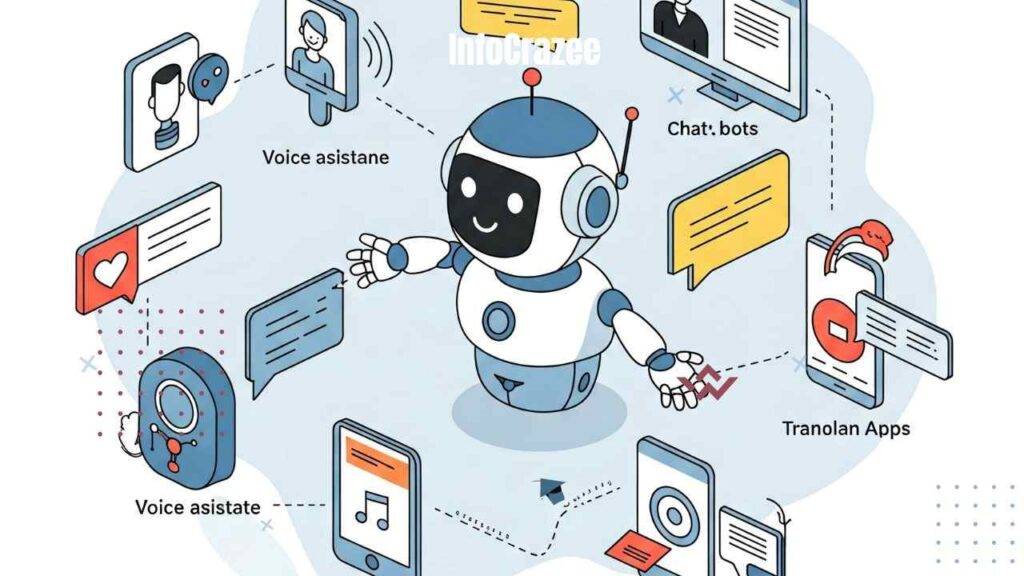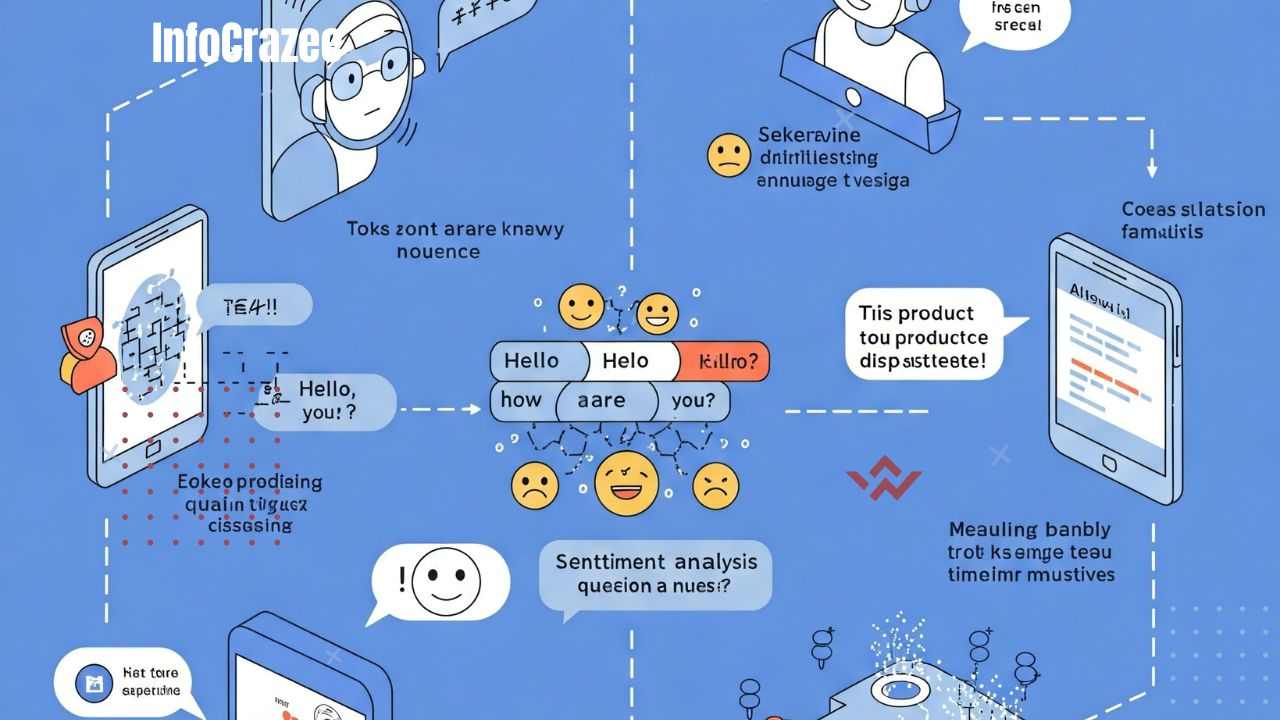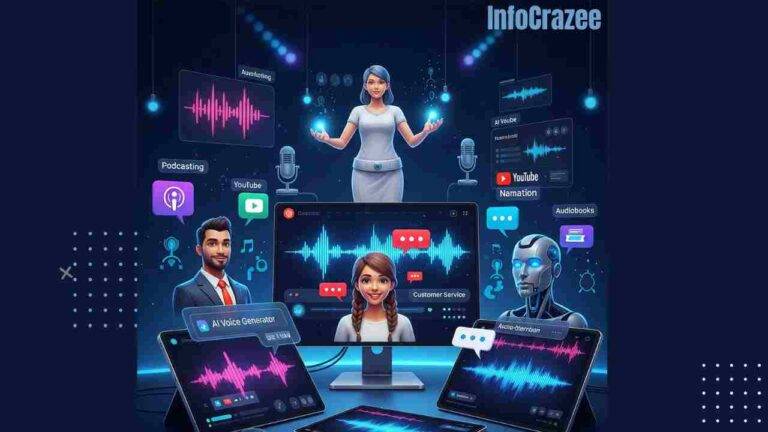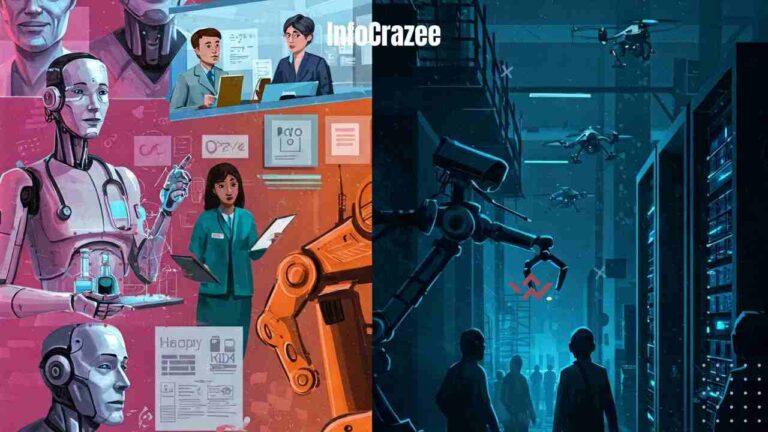How AI Understands Us: A Simple Look at Natural Language Processing
Imagine trying to explain a joke, a pun, or a sarcastic comment to a robot. Sounds tricky, right? That’s because language isn’t just about words—it’s about meaning, tone, emotion, and even context. And that’s where Natural Language Processing (NLP) comes in. It’s the magic behind how computers understand and respond to human language.
Whether you’re chatting with Siri, translating a foreign phrase, or asking ChatGPT a question, NLP is quietly working behind the scenes. In this article, we’ll break down how it works in a way that’s easy to understand—and why it matters to all of us.
What is Natural Language Processing (NLP), Really?
Let’s start simple.
Natural Language Processing is a part of artificial intelligence that helps computers read, understand, and respond to human language. It’s how machines make sense of what we say, type, or write.

Think of NLP as the brain behind:
- Voice assistants like Alexa and Google Assistant
- Chatbots on websites
- Spell checkers and grammar tools
- Real-time translation apps
- Email filters that catch spam
But how does NLP actually “understand” us? Let’s break it down.
The Building Blocks of NLP
NLP may sound complex, but at its core, it’s made up of a few basic tasks:
1. Tokenization
This is where the computer breaks down a sentence into words or phrases.
Example:
“AI is amazing” becomes [“AI”, “is”, “amazing”]
2. Part-of-Speech Tagging
It figures out what role each word plays—noun, verb, adjective, etc.
Example:
“AI (noun) is (verb) amazing (adjective)”
3. Named Entity Recognition (NER)
This identifies names, places, brands, dates, and more.
Example:
“Elon Musk founded SpaceX” → Elon Musk (person), SpaceX (organization)
4. Sentiment Analysis
This helps the AI understand feelings behind words—is the message happy, sad, angry, or neutral?
5. Syntax and Grammar Checking
It checks the structure of sentences and suggests corrections. Tools like Grammarly use this all the time.
Real-World Example: Ordering Pizza with AI
Let’s say you message a food delivery chatbot and type:
“I want a large pepperoni pizza with extra cheese delivered to 123 Main Street.”
Here’s what NLP does:
- Tokenizes the sentence
- Identifies that “large pepperoni pizza” is the item
- Recognizes “extra cheese” as a modifier
- Detects “123 Main Street” as a location
- Understands the whole sentence as a request
Then the chatbot replies with something like:
“Got it! A large pepperoni pizza with extra cheese is on the way to 123 Main Street.”
It feels natural, right? That’s the goal of NLP.
How Does AI Learn Language?
Unlike humans, AI doesn’t grow up learning to talk from parents. It learns from data—lots of it.
Here’s how it works:
- AI is trained on books, websites, conversations, and articles (like this one!)
- It looks for patterns in how we use words and phrases
- With time and training, it learns to respond in a way that makes sense
Thanks to something called machine learning, the more data an AI sees, the better it gets at understanding language—even the weird or messy stuff.
Challenges of NLP (Yes, It’s Not Perfect)
Language is tricky. Even humans mess it up sometimes. So naturally, AI has its challenges too.
Here are a few:
- Sarcasm and jokes: “Oh great, another Monday” might sound positive but isn’t.
- Different languages and dialects: The word “chips” means fries in the UK but snacks in the US.
- Misspellings or slang: “U r gr8” makes sense to us, but can confuse AI.
Developers are constantly improving NLP models to handle these quirks, but it’s a work in progress.
Why NLP Matters in Everyday Life
You might not realize it, but NLP is already making your life easier.
Here’s how:
- Better communication: From smart replies in emails to live captions on videos.
- Faster customer service: Chatbots solve problems without long hold times.
- Accessibility: People with disabilities can use voice tools to write, browse, or navigate.
- Smarter apps: Personalized recommendations, cleaner grammar, or helpful suggestions.
In short, NLP helps tech feel more human—and that’s something we can all appreciate.
What’s Next for NLP?
The future of NLP is exciting. We’re moving towards systems that can:
- Understand context better (like remembering what you said earlier in a conversation)
- Pick up on emotions more accurately
- Translate languages with cultural understanding
- Help people write, code, or even create music more easily
Pretty cool, right?
Final Thoughts
Natural Language Processing isn’t just for tech experts—it’s quietly transforming how we live, work, and connect with each other. Whether you’re texting a friend, asking your phone for directions, or using a grammar checker, NLP is working behind the scenes to make it all happen.
The best part? It’s still growing and learning—just like us.
Ready to Explore More?
If you’re curious about how AI is changing the world around us—especially in ways that feel personal and helpful—stick around infocrazee. We keep things simple, real, and relatable.
FAQs
1. Can NLP understand different languages?
Yes! NLP systems can be trained on multiple languages, and tools like Google Translate use NLP to translate between them. However, translations may not always capture cultural or emotional context perfectly.
2. Is NLP only used in chatbots and voice assistants?
Not at all. NLP is also used in email filters, grammar checkers, sentiment analysis tools, translation apps, and even in healthcare or finance to analyze documents.
3. Can NLP understand slang or casual speech?
It’s getting better! With more data and training, NLP systems are improving at understanding slang, emojis, and informal language. But they might still miss the meaning sometimes.






